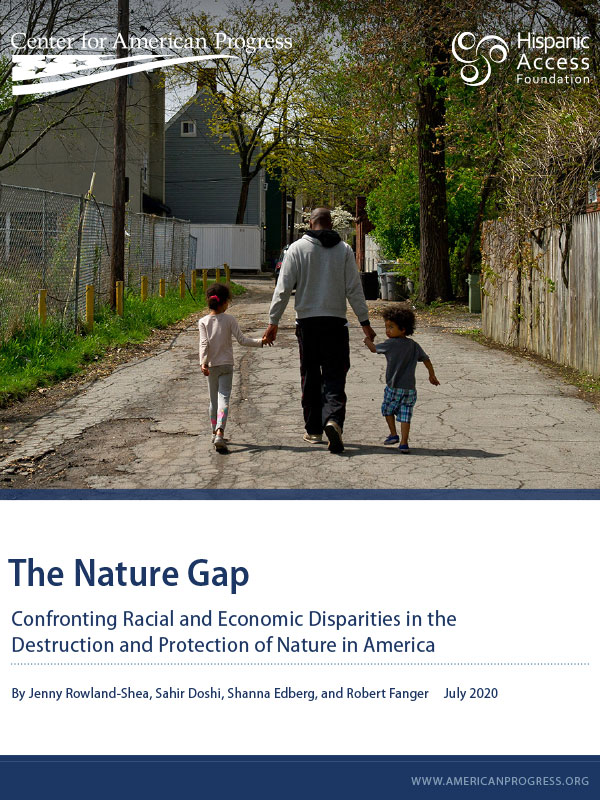Report
The Nature Gap
Publication Date:
Clean drinking water, clean air, public parks and beaches, biodiversity, and open spaces are shared goods to which every person in the United States has an equal right both in principle and in law. Nature is supposed to be a “great equalizer” whose services are free, universal, and accessible to all humans without discrimination. In reality, however, American society distributes nature’s benefits—and the effects of its destruction and decline—unequally by race, income, and age.
The nation’s recent reckoning with racism and violence against Black people has brought environmental injustices and disparities into long-overdue focus. The stories of Christian Cooper, threatened with violence and arrest while bird-watching in Central Park, and Ahmaud Arbery, murdered while jogging down a tree-lined street in coastal Georgia, are among the countless stories of Black, brown, and Indigenous people who, while seeking to enjoy the outdoors, have been threatened, killed, or made to feel unsafe or unwelcome.
Meanwhile, long-running environmental injustices, such as the concentration of toxic air pollution and water pollution near communities of color, have been exacerbated by the ongoing coronavirus pandemic, with Black, Indigenous, and Latino communities experiencing higher virus-related hospitalization and death rates than white communities. Further, in many parts of the country, the coronavirus pandemic has exposed an uneven and inequitable distribution of nearby outdoor spaces for recreation, respite, and enjoyment. Particularly in communities of color and low-income communities, families have too few safe, close-to-home parks and coastlines where they are able to get outside. At this time of social distancing, when clean, fresh air is most wanted and needed, nature is out of reach for too many.
